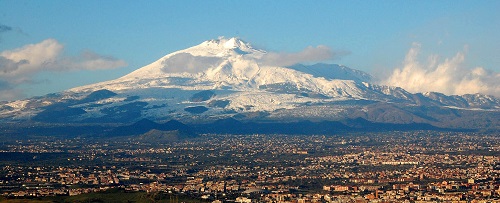All eyes to the skies today, a giant asteroid is rocketing past the Earth as we speak.
Giant Asteroid’s Close Encounter With Earth: Watch the Thrilling Video
In the vast expanse of the cosmos, the recent close encounter between Earth and the colossal asteroid, 2008 OS7, has captivated the attention of both astronomers and enthusiasts alike.
This celestial event, while not visible to the naked eye, was made accessible to the public through a live-streamed video, allowing viewers to witness the awe-inspiring majesty of this mammoth space rock.
But beyond the thrill of the video lies a deeper significance – the ongoing efforts of NASA to track and safeguard our planet from potential asteroid threats.
Brace yourself for a journey that unveils both the wonder and the necessity of our ongoing exploration of the cosmos.
Key Takeaways
- Asteroid 2008 OS7 is a large asteroid, estimated to be about 890 feet across, similar in size to football stadiums and the Empire State Building.
- The asteroid made its first trip close to Earth since 2016 and will return in 2032 but at a much greater distance.
- The Virtual Telescope Project provided a live stream on YouTube, allowing viewers to observe the asteroid as a tiny dot moving past stars in the background.
- NASA considers asteroid 2008 OS7 a potentially hazardous space object and actively tracks near-Earth objects to prepare for potential threats.
Background of Asteroid 2008 OS7
Asteroid 2008 OS7, estimated to be about 890 feet across, recently made its first close encounter with Earth since 2016. This asteroid, similar in size to football stadiums and the Empire State Building, approached Earth as part of a group of four near-Earth asteroids. However, among the four, Asteroid 2008 OS7 was the largest, with the others being significantly smaller, with the largest measuring only 70 feet across.
Despite its size, the asteroid was too small and far away to be seen without a telescope. However, thanks to the Virtual Telescope Project, viewers were able to observe the asteroid virtually through a live stream on YouTube. The video of the event is still available for viewing, providing a unique glimpse into the cosmic encounter.
Observing the Asteroid
During the recent close encounter with Earth, the observation of Asteroid 2008 OS7 provided a unique glimpse into the cosmic encounter through a live stream on YouTube. The asteroid, estimated to be about 890 feet across, was too small and far away to be seen without a telescope. However, the Virtual Telescope Project streamed the event live, allowing viewers to witness the asteroid as a tiny dot moving past stars in the background.
The video of the event is still available for viewing, offering a virtual observation of the asteroid. This live stream enabled people from all over the world to witness the close encounter and appreciate the scale and beauty of these celestial objects.
Through such observations, scientists and space enthusiasts can deepen their understanding of asteroids and contribute to our knowledge of the solar system.
Potentially Hazardous Asteroids
Potentially posing a threat to Earth, certain asteroids are categorized as potentially hazardous space objects by NASA. These are asteroids that have the potential to come within 4.6 million miles of our planet and are larger than approximately 492 feet in size.
While most asteroids reside within the main asteroid belt, some follow paths that bring them closer to the inner solar system. To track these potentially hazardous asteroids, NASA’s Jet Propulsion Laboratory continuously monitors their movements. In fact, NASA’s Asteroid Watch dashboard displays the next five closest approaches, providing key information about their distances and sizes.
To protect Earth from potential asteroid impacts, NASA’s Planetary Defense Coordination Office catalogs near-Earth objects and develops strategies to deflect them if necessary. Additionally, NASA is developing the NEO Surveyor telescope to enhance our ability to detect and track these objects, allowing for early warning and potential mitigation strategies.
Understanding the characteristics and trajectories of potentially hazardous asteroids is crucial for planetary defense and contributes to our overall knowledge of the solar system.
Nasa’s Efforts to Protect Earth From Asteroids
NASA is actively engaged in safeguarding Earth from potential asteroid impacts through various initiatives and technologies. One of these initiatives is the Planetary Defense Coordination Office, which catalogues near-Earth objects to prepare for potential threats. Additionally, NASA conducted a successful test mission by crashing a spacecraft into an asteroid called Dimorphos. Rather than obliterating threatening objects, experts prefer nudging them out of the way.
In line with this, NASA is developing the NEO Surveyor telescope, designed to discover 90% of asteroids and comets larger than 460 feet within 30 million miles of Earth’s orbit. Tracking near-Earth objects is crucial for planetary defense, allowing for early warning and potential mitigation strategies. Furthermore, the data collected from tracking asteroids contributes to our overall knowledge of the solar system.
Importance of Tracking Near-Earth Objects
Tracking near-Earth objects plays a vital role in safeguarding our planet and assessing the potential risks of asteroid impacts. NASA’s Near-Earth Object Observations program is dedicated to identifying and tracking potentially hazardous asteroids. By understanding the characteristics and trajectories of these objects, scientists can better assess their impact risk and develop early warning systems.
Tracking near-Earth objects also allows for the development of potential mitigation strategies, such as nudging threatening objects out of the way. Additionally, the data collected from tracking asteroids contributes to our overall knowledge of the solar system.
With the increasing awareness of the potential dangers posed by asteroids, the importance of tracking these objects cannot be overstated. It is through these efforts that we can take proactive measures to protect our planet from potential catastrophic events.
Size and Characteristics of Asteroid 2008 OS7
Asteroid 2008 OS7, estimated to be about 890 feet across, made a close encounter with Earth on its first trip since 2016. This massive asteroid is similar in size to football stadiums and the Empire State Building. It is one of four near-Earth asteroids that safely passed by our planet on a specific day.
In comparison, the other three asteroids were much smaller, with the largest being only 70 feet across. Despite its size, the asteroid was too small and distant to be seen without a telescope. However, the Virtual Telescope Project provided a live stream of the event, allowing viewers to observe the asteroid as a tiny dot moving past stars in the background.
NASA’s Asteroid Tracking Systems
NASA’s efforts to monitor and study near-Earth objects encompass a comprehensive system of asteroid tracking and observation technologies. The Jet Propulsion Laboratory (JPL) is responsible for tracking asteroids or comets that come within 4.6 million miles of Earth. Any object larger than about 492 feet that can approach Earth within this distance is considered potentially hazardous.
To aid in this task, NASA has developed the Asteroid Watch dashboard, which displays the next five closest approaches and their distances and sizes.
In addition to tracking, NASA is actively working on protecting Earth from asteroids through the Planetary Defense Coordination Office. This includes cataloging near-Earth objects and developing technologies, such as the NEO Surveyor telescope, to identify and track potentially hazardous asteroids.
Future Plans for Asteroid Defense
In order to enhance Earth’s protection against potential asteroid threats, ongoing efforts are focused on developing advanced strategies and technologies for future asteroid defense.
One of NASA’s future plans is the development of the Double Asteroid Redirection Test (DART) mission. DART aims to test the effectiveness of kinetic impactor technology by intentionally crashing a spacecraft into a small moonlet orbiting the asteroid Didymos. By observing the resulting impact and measuring the deflection of the moonlet’s orbit, scientists can gather valuable data on how to mitigate potential asteroid threats.
Additionally, NASA is working on the Asteroid Impact and Deflection Assessment (AIDA) mission, which will involve the European Space Agency’s Hera spacecraft. These missions demonstrate the proactive approach being taken to develop effective asteroid defense strategies for the future.
Albion News is a great place to find informative, up-to-date news articles. We provide a wide range of unique articles that offer an interesting perspective on current events from around the world and from various different sources. You can easily search for the topics that matter most to you and explore in-depth pieces that provide insight into the issues and important debates occurring today. Albion News helps you stay informed with carefully researched and credible stories!





